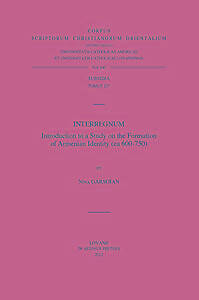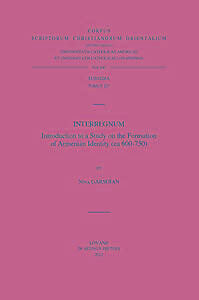
- Afhalen na 1 uur in een winkel met voorraad
- Gratis thuislevering in België vanaf € 30
- Ruim aanbod met 7 miljoen producten
- Afhalen na 1 uur in een winkel met voorraad
- Gratis thuislevering in België vanaf € 30
- Ruim aanbod met 7 miljoen producten
Zoeken
€ 65,00
+ 130 punten
Omschrijving
Armenian mediaeval historians, who have concentrated primarily on political high points, have tended to dismiss the more than four centuries dividing the two royal epochs of the Arsacids (ending, A.D. 428) and the Bagratids (inaugurated with the coronation of Ashot I, A.D. 884), as a 'Dark Age'. The intention of the present study, on the contrary, is to attempt the examination of a portion of the 'Interregnum' (600-750) as a period of religious synthesis and social renewal, as well as of intellectual and particularly artistic effervescence. In such an interpretation, the 'Interregnum', despite the unfavourable nature of its exterior and interior political setting, becomes the hypothetical locus during which, the identity of Armenia seems to have been forged, as that of a nation existing outside the framework of a political state. Consequently, the purpose of the present investigation is to eschew a political approach, which has proved at best episodic and fragmentary, in order to seek, in a period devoid of a centralized state, a different explanation for the continuous survival of 'Armenia', in spite of the numerous vicissitudes of its tumultuous history.
Specificaties
Betrokkenen
- Auteur(s):
- Uitgeverij:
Inhoud
- Aantal bladzijden:
- 195
- Taal:
- Engels
- Reeks:
- Reeksnummer:
- nr. 640
Eigenschappen
- Productcode (EAN):
- 9789042925168
- Verschijningsdatum:
- 5/06/2012
- Uitvoering:
- Paperback
- Formaat:
- Trade paperback (VS)
- Gewicht:
- 1579 g

Alleen bij Standaard Boekhandel
+ 130 punten op je klantenkaart van Standaard Boekhandel
Beoordelingen
We publiceren alleen reviews die voldoen aan de voorwaarden voor reviews. Bekijk onze voorwaarden voor reviews.











